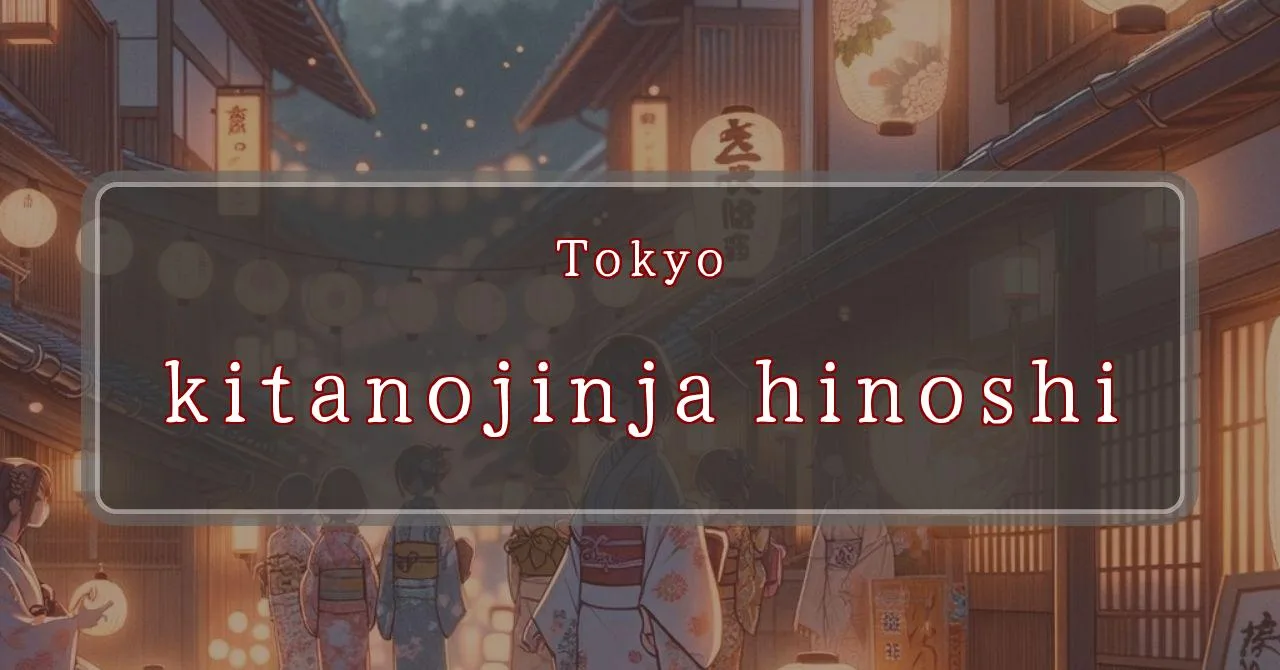Enchanting lights adorn Hino City’s night sky
Basic Information
Kita-no Shrine is a Shinto shrine located in Hino City, Tokyo, Japan.
- Address: 480 Ueda, Hino City, Tokyo
- Phone Number: 042-586-8808
- Access: 20 minutes on foot from Hino Station on the JR Chuo Line or 25 minutes on foot from Takahatafudo Station on the Keio Line
- Festival Days: February 11th (Sat), 2024 (Reiwa 6)
Main Events and Attractions of the Festival
The Kita-no Shrine Festival is a vibrant and lively event that showcases traditional Japanese culture and entertainment. Here are some of the main events and attractions that visitors can enjoy:
Mikoshi Procession
One of the highlights of the festival is the Mikoshi Procession, where a portable shrine, or mikoshi, is carried through the streets of Hino City. The mikoshi is believed to house the spirit of the deity enshrined at Kita-no Shrine, and it is carried by teams of people who chant and dance as they make their way through the city. The procession is a lively and colorful spectacle that draws large crowds of spectators.
Kagura Performance
Kagura is a traditional Japanese performing art that combines music, dance, and storytelling. During the Kita-no Shrine Festival, kagura performances are held at the shrine’s main hall. These performances tell stories from Japanese mythology and folklore, and they are accompanied by beautiful music and elaborate costumes. Kagura is a fascinating and unique art form that offers visitors a glimpse into Japan’s rich cultural heritage.
Food and Games
The festival also features a variety of food stalls and games. Visitors can enjoy a wide range of traditional Japanese dishes, as well as some more modern festival favorites. There are also a variety of games and activities for children, making the festival a fun and enjoyable event for the whole family.
Blessings and Deities
Kita-no Shrine is dedicated to Sugawara no Michizane, a renowned scholar and politician who lived during the Heian period (794-1185). Sugawara no Michizane is revered as the god of scholarship and learning, and he is often worshipped by students and those seeking success in their studies. Visitors to Kita-no Shrine can pray for academic success, as well as for general good luck and prosperity.
Origin and History
The exact origins of Kita-no Shrine are unknown, but it is believed to have been founded during the Muromachi period (1336-1573). The shrine was originally located within the grounds of the Hino Hachiman Shrine, but it was later moved to its current location in Ueda, Hino City. Kita-no Shrine has undergone several renovations and expansions over the years, and it is now a popular destination for worshippers and tourists alike.
Tips and Notes for Visitors
- The Kita-no Shrine Festival is held annually on February 11th. The festival features a variety of events and attractions, including a mikoshi procession, kagura performances, and food stalls.
- Kita-no Shrine is located in a quiet residential area of Hino City. Visitors can enjoy a peaceful and relaxing atmosphere while exploring the shrine and its surroundings.
- There is a small parking lot available at Kita-no Shrine. However, it is recommended to use public transportation or park in a nearby parking lot and walk to the shrine.
Parking Information
- There is a small parking lot available at Kita-no Shrine. However, it is recommended to use public transportation or park in a nearby parking lot and walk to the shrine.
- There are several public parking lots located within walking distance of Kita-no Shrine. Visitors can find parking information on the shrine’s official website or by asking at the shrine office.
Popular Stalls and Food Carts in Recent Years
| Type of Stall | Description |
|---|---|
| Takoyaki | A staple at Japanese festivals. Characterized by a crispy outside and a creamy inside. |
| Jaga Butter | A simple yet popular snack of hot potatoes lavishly topped with melted butter. |
| Baby Castella | Small castella cakes, sweet and fluffy treats enjoyed by children and adults alike. |
| Grilled Ayu with Salt | Fresh ayu fish grilled whole with salt, a savory taste of Japanese summer. |
| Shaapin | A unique gourmet item influenced by foreign cuisine, with a chewy skin wrapping the filling. |
| Okonomiyaki | A Japanese grilled dish where you often choose your own ingredients for a personalized flavor. |
| Cotton Candy | A fluffy, sweet snack that’s extremely popular with children. |
| Chocolate Banana | A banana coated in chocolate, a fun and visually appealing dessert. |
| Kushiyaki | Various types of ingredients skewered and grilled, an easy-to-enjoy snack. |
| Yakisoba | Fried noodles mixed with a special sauce, a fast food favorite in Japan. |



